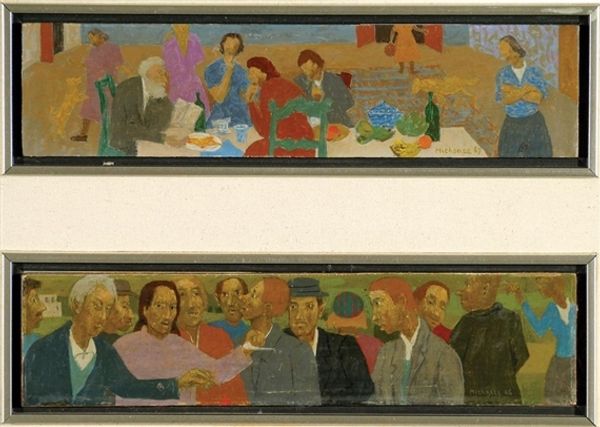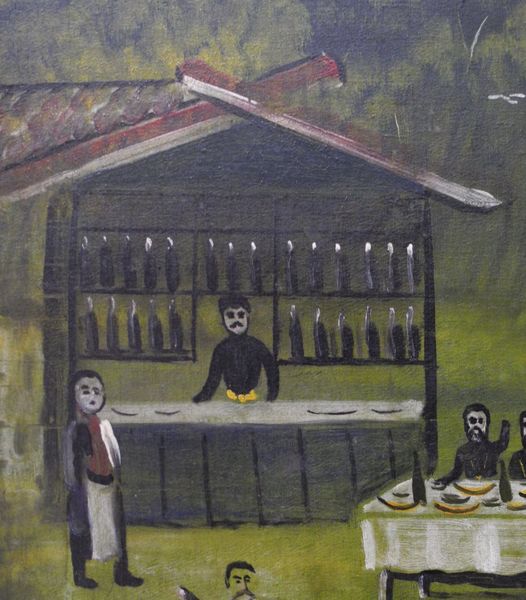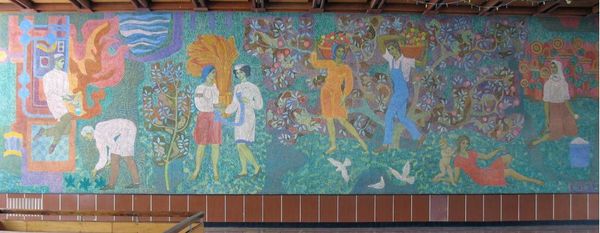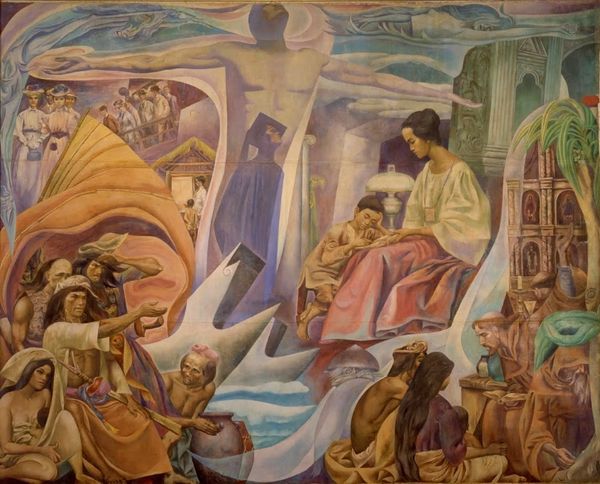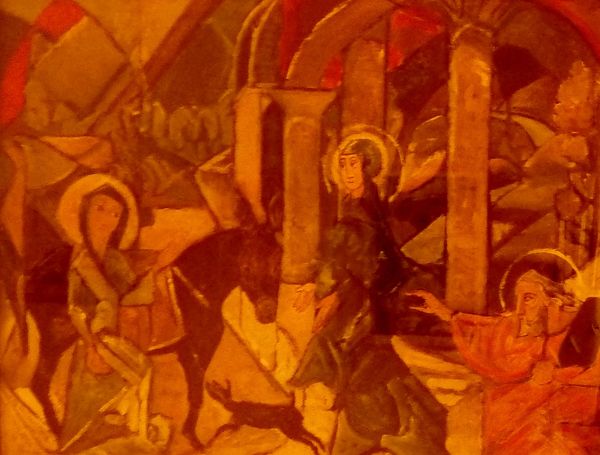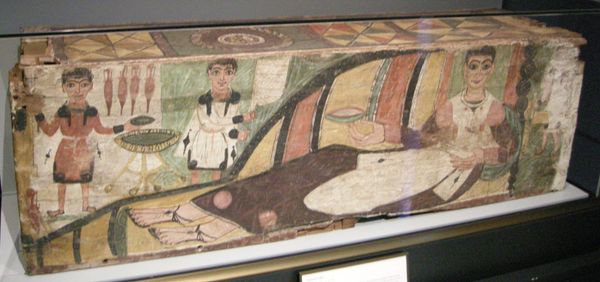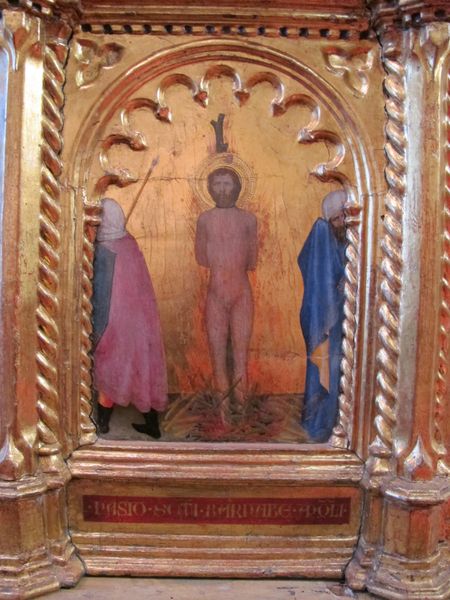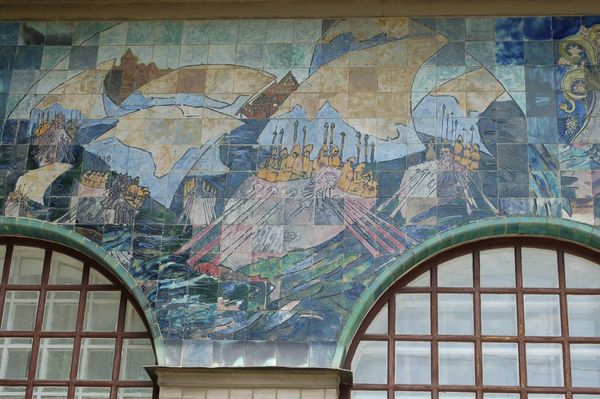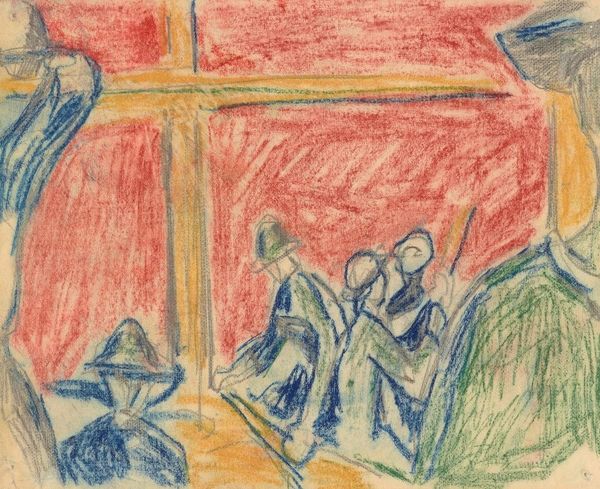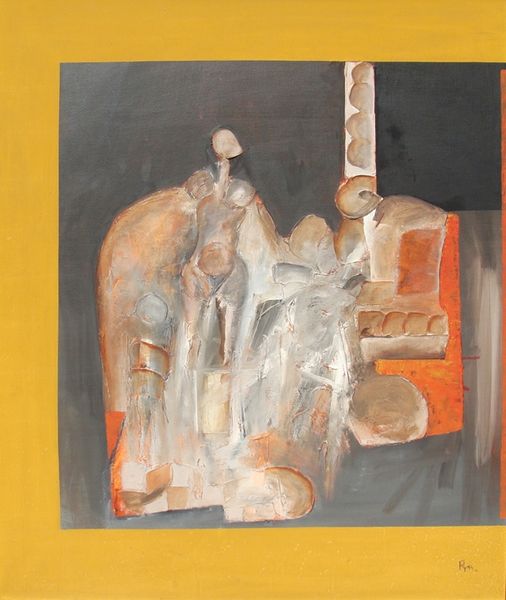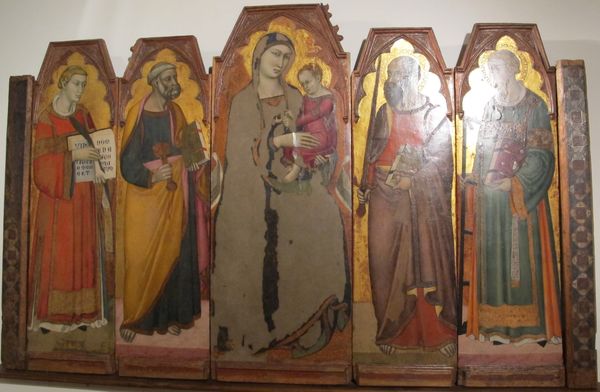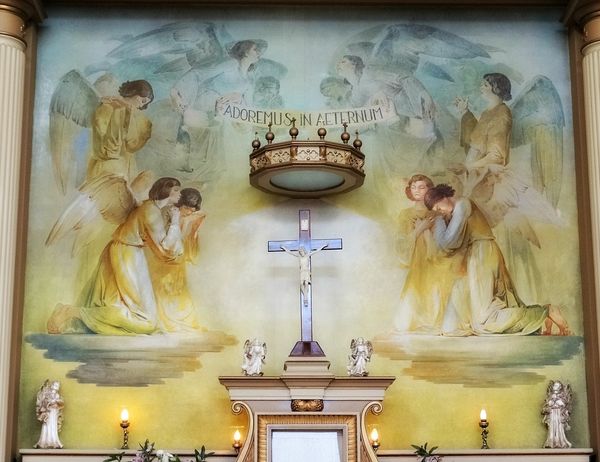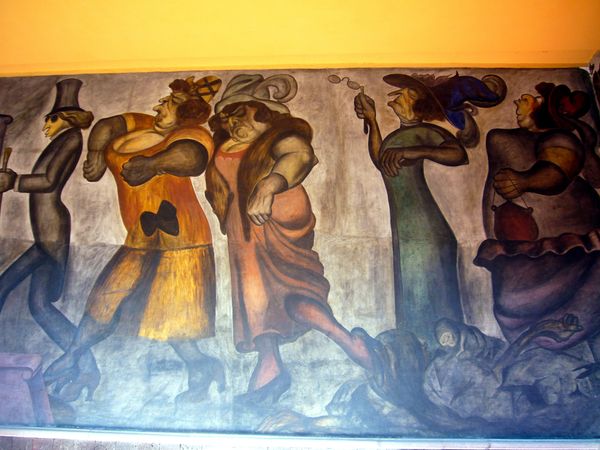
tempera, oil-paint
byzantine-art
narrative-art
tempera
oil-paint
figuration
oil painting
Copyright: Jerzy Nowosielski,Fair Use
Editor: We’re looking at a work by Jerzy Nowosielski titled “Icons”, made with tempera and oil paint. These painted panels, arranged together, evoke a feeling of timelessness. There's something very serene about them. What visual language speaks to you most in this piece? Curator: It's the persistent echo of Byzantine tradition resonating across time. The artist employs recognizable symbolic forms. Take the halos, for example; how do they function, not just as identifiers of sanctity, but as a cultural memory ingrained within the visual lexicon? Editor: The halos definitely stand out! I also see stylized figures and the limited color palette—all pointing back to the Byzantine style. Is it simply stylistic borrowing, or something more? Curator: Nowosielski wasn’t merely replicating; he was reinterpreting. He seems interested in exploring how ancient visual vocabularies speak to contemporary spiritual seeking. Consider the deliberate flatness, almost a rejection of Western perspective. What does that denial imply, do you think, about our relationship to the divine? Editor: Maybe a more direct connection, less mediated by realism? So the visual style isn't just decorative, but functional, serving a deeper spiritual purpose. Curator: Precisely. How do you feel that the artist’s choices succeed in building this bridge to something profound? How can we learn to view them, ourselves? Editor: It's like Nowosielski is offering us a pathway back to a sense of awe, reminding us of the enduring power of these symbols. Curator: Absolutely. This artwork showcases that imagery is not merely representative but also carries with it centuries of emotional, cultural, and psychological weight, influencing both artist and viewer.
Comments
No comments
Be the first to comment and join the conversation on the ultimate creative platform.
